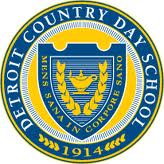During a visit to one of our social studies classes the week before Easter break, I was impressed with the student perspectives on the topic of the day - globalization. Today's young people have a greater grasp of this concept than many adults. As technology has led to greater connectivity between peoples of the world, Earth has become a smaller, and to use the term of author Thomas Friedman, a "flatter" place. At a recent conference I attended, a presenter made the statement that in the world of technology, adults are immigrants, and young people are natives. By their very immersion in the technologies of our time, our students have innate understandings and intuitions about the use of those technologies that are elusive to even the most tech savvy adults. It is essential that schools recognize the differences in the way students learn today, and the way they learned years ago, and adjust instructional delivery to take advantage of the technologies that exist.
In his address to school administrators at a recent conference the executive director of the National Association of Secondary School Principals, Gerald Tirozzi, said the following, "We are currently preparing students for jobs that don't yest exist and teaching them to use technologies that haven't been invented, in order to solve problems we don't even know are problems yet. We are living in exponential times. With changes whirling all around us, the American school has remained remarkable stagnant." While our content has evolved with the times, and we are constantly updating curriculum and standards, we have not yet entirely adapted our instructional delivery models to mesh with the digitally oriented generation we service. If you don't know what blogs, wikis and message boards are, ask your kids - they will know...
In addition to modifying instructional methodology to better address our students' learning styles, it is also critical that we look closely at the methods of assessment used to measure student learning. At the high school level, teachers are increasingly using a wide variety of assessment including online projects, portfolios, and tools that measure layers of learning. Again from Gerald Tirozzi's recent address, "...we must awaken policymakers to the reality that one test, administered once each year, based on minimal proficiencies, which stymies enlightened and creative teaching....is not the wave of the future...".
As we enter the meat of an election year, I urge you to carefully evaluate political candidates based on their education platforms, and their positions on No Child Left Behind's testing requirements. There are some interesting ideas out there. To move our educational system and our country forward, it is imperative that we not fall in the trap of doing what we have always done. The "natives" of our digital world no longer relate to long hours in lecture halls, taking copious notes. Today's world changes quickly, requires creative solutions to problems, and requires that we prepare our students with the tools to problem solve in a rapidly changing environment. In this new millennium the capacity to adapt to change and utilize it will become significantly more important. What we don't know can hurt us, and what we don't know how to use may hurt us even more...
